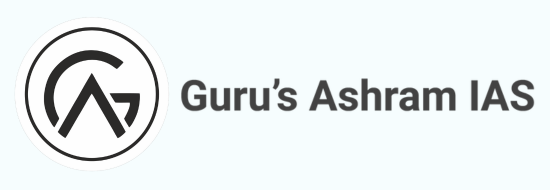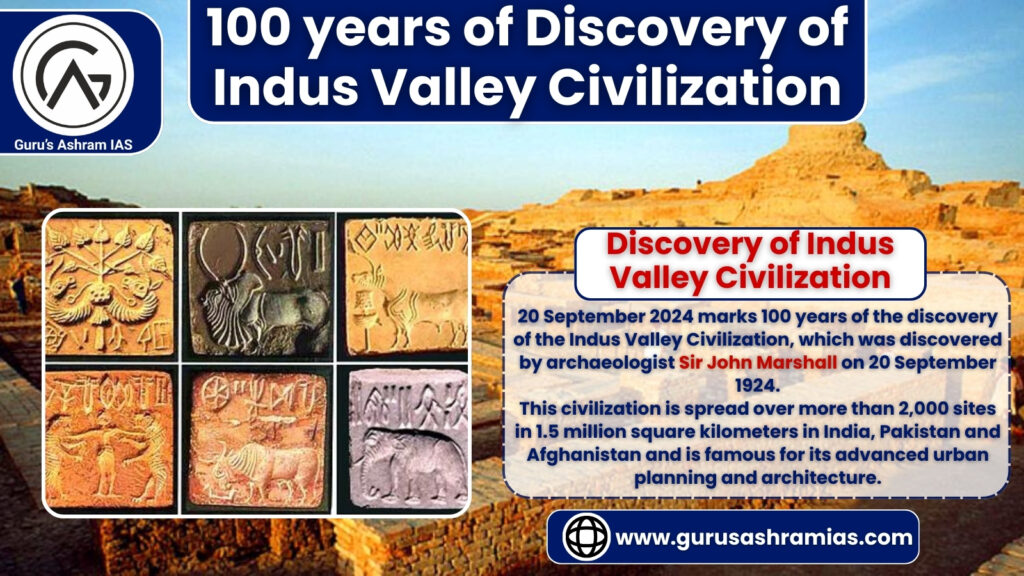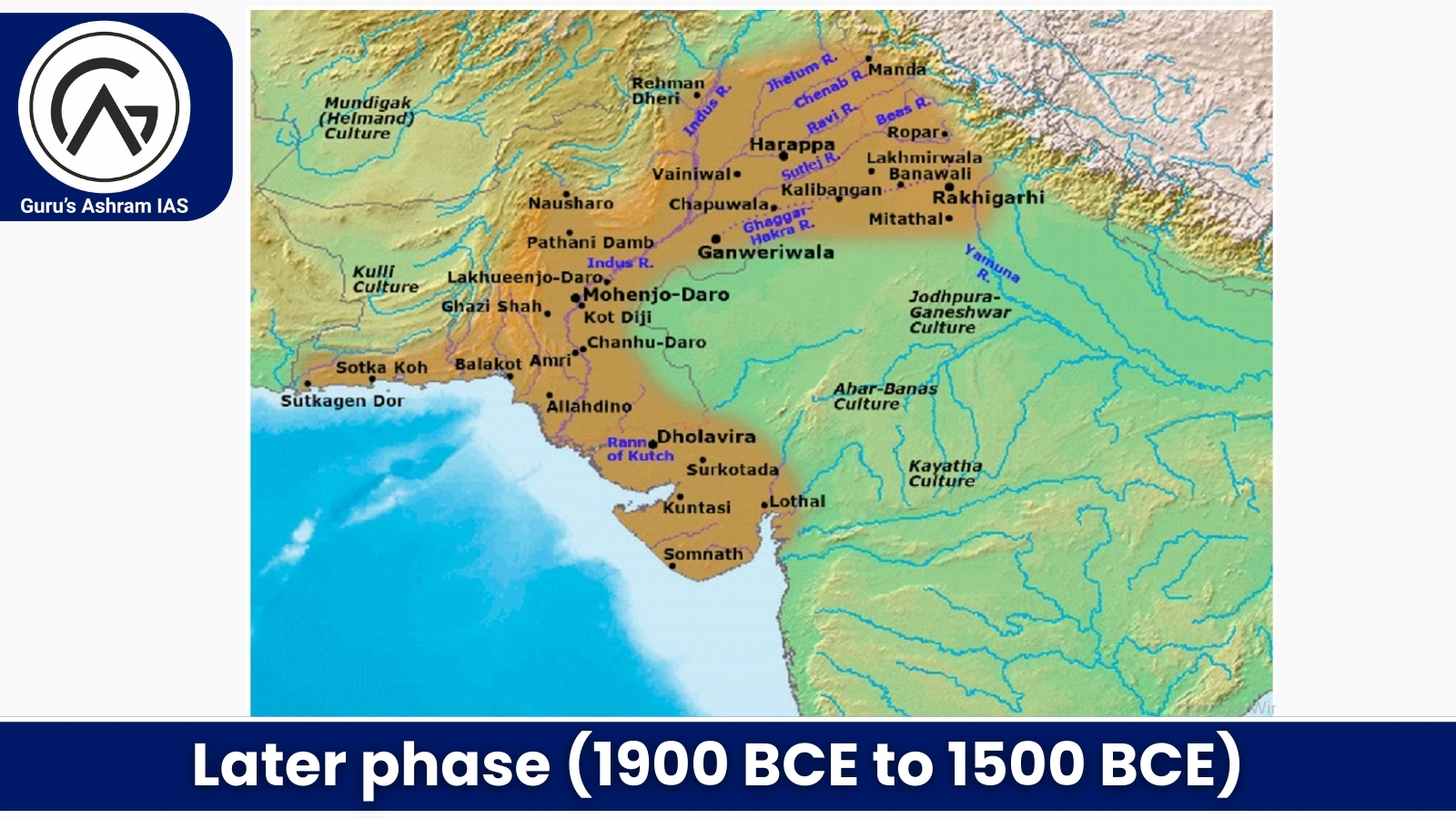100 years of discovery of Indus Valley Civilization
- 20 September 2024 marks 100 years of the discovery of the Indus Valley Civilisation, which was discovered by archaeologist Sir John Marshall on 20 September 1924.
- This civilization is spread over more than 2,000 sites in 1.5 million square kilometers in India, Pakistan and Afghanistan and is famous for its advanced urban planning and architecture.
Harappan Civilization:
- The Harappan Civilization, also known as the Indus Valley Civilization (IVC), developed around 2500 BCE on the banks of the Indus River.
- It was the largest of the four ancient urban civilizations along with Egypt, Mesopotamia and China.
- The Indus Valley Civilization has been classified as a Bronze Age civilization due to the discovery of many artifacts made of copper-based alloys.
- Daya Ram Sahni first discovered Harappa in 1921-22 and Rakhal Das Banerjee discovered Mohenjodaro in 1922.
- Sir John Marshall, Director General of ASI, was responsible for the excavations that led to the discovery of the Harappan and Mohenjodaro sites of the Indus Valley Civilisation.
Phases:
Early phase (3200 BCE to 2600 BCE):
- This phase belongs to the Hakra phase, which was discovered in the Ghaggar-Hakra river valley. The oldest Indus script dates to 3000 BC.
Mature Period (2600 BCE to 1900 BCE):
- By 2600 BCE, the IVC had reached the mature stage. Early Harappan cities such as Harappa and Mohenjodaro in Pakistan and Lothal in India were developing as major urban centres during this period.
Later phase (1900 BCE to 1500 BCE):
- During this phase, the Harappan civilization declined and was destroyed.
Important Sites of Harappan Civilization:
Location |
Finder |
Located |
Important Search |
| Harappa (1921) | Dayaram Sahni | Is located on the banks of the Ravi River in |
|
| Mohenjodaro (Mound of the Dead) | Rakhaldas Banerjee (1922) | Is located on the banks of the Indus River in the Larkana district of Punjab province, Pakistan. |
|
| Sutkagendor | Stein (1929) | Is located on the banks of the Dasht River in the southwestern state of Balochistan, Pakistan. |
|
| Chanhudaro | N. G. Majumdar (1931) | In Sindh Province on the banks of the Indus River. |
|
| Amri | N. G. Majumdar (1935) | On the banks of the river Indus. |
|
| Kalibangan on | Ghosh (1953) | The banks of Ghaggar river in Rajasthan. |
|
| Lothal | R. Rao (1953) | On the banks of the Bhogava river near the chain of Cambay in Gujarat. |
|
| Surkotda from | JP Joshi (1964) | Gujarat |
|
| Banawali | R.S. Bisht (1974) | Located in Hisar district of Haryana. |
|
| Dholavira | R.S.Vist (1985) | Located in the Rann of Kutch in Gujarat. |
|
Key features of the Harappan Civilization:
City Planning:
- The Harappan civilization is known for its urban planning system.
- The cities of Mohenjodaro and Harappa had their own forts which were located at some height from the city and were presumably inhabited by the upper classes.
- Below the fort, there were usually brick towns inhabited by common people.
- One of the notable features of the Harappan civilisation was the presence of a grid system under which roads intersected each other at right angles.
- The construction of granaries was a prominent feature of Harappan civilisation cities.
- The use of baked bricks was a prominent feature of the Harappan civilization as dry bricks were used to build houses in contemporary Egypt.
- The drainage system was very effective in the Harappan civilization.
- Every small and big house had its own bathroom and courtyard.
- Wells were not found in many houses of Kalibanga.
- In some places, such as Lothal and Dhaulavira, the entire layout was divided into parts by fortified and city walls.
Agriculture:
- Harappan villages were mainly located near floodplains, producing substantial amounts of grain.
- Wheat, barley, mustard, sesame, lentils etc. were produced. Indications of millet production have also been found from some places of Gujarat, while indications of rice use are comparatively rare here.
- The Indus Valley Civilization was the first to cultivate cotton.
- It is difficult to reconstruct the actual agricultural traditions because the primacy of agriculture is measured on the basis of its grain production capacity.
- Drawings of bulls have been found on seals and terracotta figurines and archaeological excavations have revealed evidence of fields ploughed by bulls.
- The Harappans practiced agriculture as well as large-scale animal husbandry.
- Evidence of the horse has been found in microscopic form in a suspected terracotta figurine of Mohenjodaro and Lothal.The Harappan culture was in no way horse centric.
Economy:
- Countless number of seals, uniform script, weights and methods of measurement reveal the importance of trade in the life of the people of Indus Valley Civilization.
- The Harappans traded in stones, metals, oysters or conches.
- Metal currency was not used. The barter system of trade existed.
- They also had efficient navigation systems along the coast of the Arabian Sea.
- They had established their trading settlements in northern Afghanistan from where there was evidently smooth trade from Central Asia.
- The Harappans had commercial relations with the region comprising the lands of the Dajla-Euphrates rivers.
- The Harappans traded through the ancient ‘lapis lazuli’ route which was probably related to the social background of the high people.
Craft:
- The Harappans were well acquainted with the method of making objects of bronze and its use.
- Copper was obtained from the Khetri mine in Rajasthan and tin was presumably brought from Afghanistan.
- Stamps used in the weaving industry have been found on many items.
- The Harappans were well-versed in boat-making, bead-making and seals. The manufacture of terracotta sculptures was an important craft feature of the Harappan civilization.
- The jewellers used to manufacture jewellery from gold, silver and precious stones.
- Pottery making was in full vogue, the Harappans had their own special pottery methods, the Harappans produced sparkling pots.
Religion:
- An image of a woman has been found on terracotta miniatures, one of these miniatures depicts a plant growing from a woman’s womb.
- The Harappans regarded the earth as the goddess of fertility and worshipped the earth in the same way as the Egyptians worshipped the Nile River as a goddess.
- Three Shringi images have been found on seals in the form of a male deity sitting in the posture of a yogi.
- The deity is depicted with an elephant on one side, a tiger on the other, a rhinoceros on one side and a buffalo behind his throne. There is a picture of two deer near his feet. The idol of the Lord depicted is given the name of Pashupatinath Mahadev.
- Images of sex and female genitalia have been found on many stones.
- The people of the Indus Valley Civilization worshipped trees and animals.
- The most important animal in the Indus Valley Civilization was the one-horned rhinoceros and the other important animal was the humped bull.
- Ample amounts of amulets have also been obtained.
Possible reasons for the decline of the Harappan civilization:
Invasion theory:
- Some scholars suggest that Indo-European tribes known as Aryans invaded and destroyed the IVC. However, evidence of cultural continuity in later societies challenges the account of this sudden invasion.
The natural environmental changes:
- The influence of environmental factors is more widely accepted.
The tectonic activity:
- Rivers may have changed course due to earthquakes, drying up essential water sources.
Changes in the rainfall pattern:
- Changes in the monsoon pattern would have led to a shortage of foodgrains with reduced agricultural productivity.
Floods:
- Changes during the river would have caused major agricultural areas to be flooded, further threatening the stability of civilization.
Recent initiatives related to IVC sites:
National Maritime Heritage Complex (NMHC):
- Under the Sagarmala programme, the Ministry of Ports, Shipping and Waterways (MoPSW) is developing a NMHC at Lothal. It includes a museum, theme park, a research institute and more to showcase India’s maritime history and heritage and attract tourists.
Inclusion of Dholavira in UNESCO World Heritage List:
- In July 2021, Dholavira was named India’s 40th World Heritage Site by UNESCO.
Developing Rakhigarhi as an iconic site:
- The Union Budget (2020-21) has proposed to develop Rakhigarhi (Hisar district, Haryana) as an iconic site.





